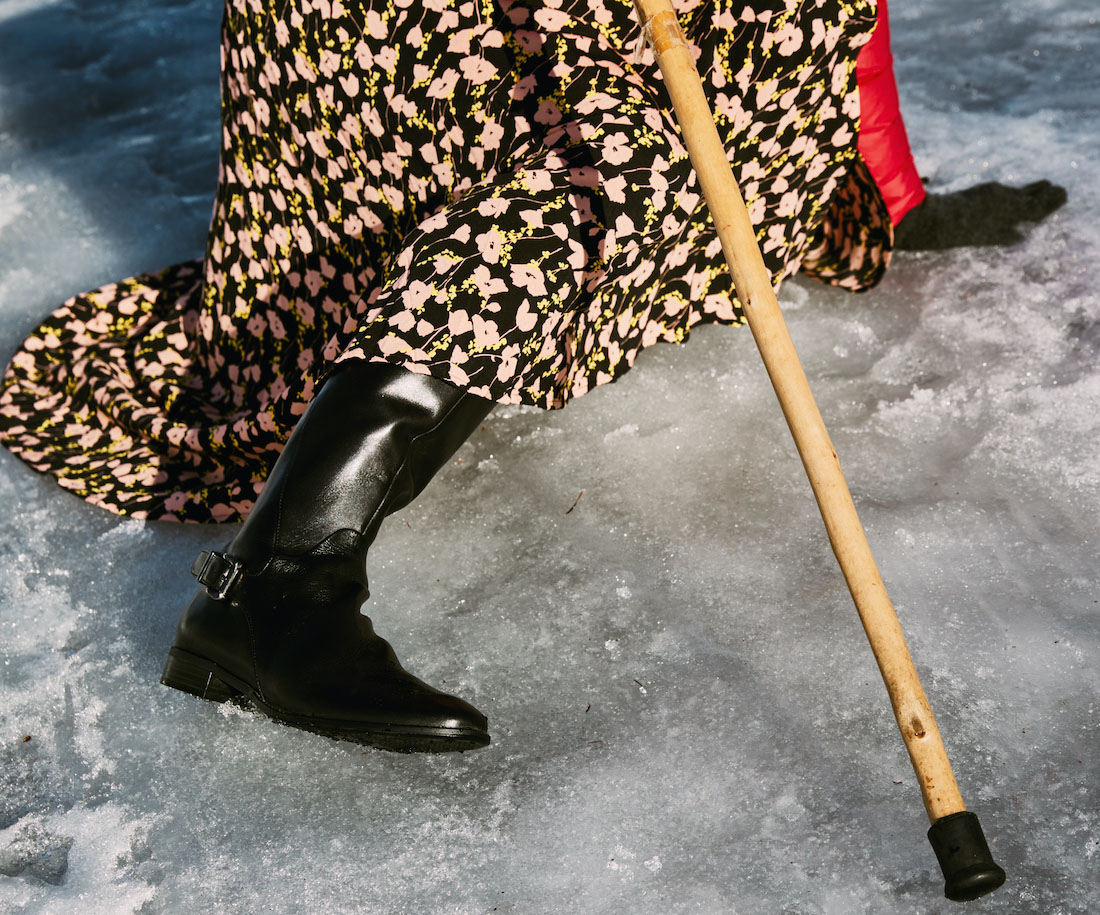Stay alert to avoid falls that can cause serious injuries, UT Southwestern orthopedist says

DALLAS – Feb. 01, 2023 – Slipping on ice or tripping over a curb can result in broken bones or more serious injuries. To avoid taking an unexpected tumble, it’s important to be aware of your surroundings and watch where you’re walking, a UT Southwestern Medical Center orthopedist advises.

“When people have injuries during the winter, it commonly involves tripping over an object or slipping on ice,” said Richard Samade, M.D., Ph.D., an Assistant Professor of Orthopaedic Surgery who specializes in hand and upper extremity surgery. “To protect themselves from greater injuries, people will instinctively stretch their hand and arm out to break their fall. Unfortunately, this leads to a decelerating force concentrated through the wrist, forearm, and elbow that often leads to injury in the small bones of those areas.”
Falls in the winter may result from climbing over snow mounds, walking on ice, or tripping over hazards covered by snow. Dr. Samade said people should take note of dark patches on pavement that may be iced over and wear appropriate footwear with good traction. Those who use a walker or cane should consider having someone walk with them in case they lose their balance.
Although falls tend to occur more frequently during the winter, hazards exist throughout the year. It’s important to pay attention to what’s ahead of you while walking rather than texting or looking down at a phone screen. Poor vision, chronic conditions, and medication use can also cause falls; using corrective lenses or walking aids and working with a health care provider to adjust medications can reduce risks.
Dr. Samade also listed outdoor work and recreational activities that can result in hand/wrist injuries during warmer months. These include gardening; construction; bicycling and scooter accidents; and falls and collisions during sports or from trees, roofs, and other heights. He recommended preventive steps such as ensuring that ladders and other elevated locations are secured, and carefully watching roads, sidewalks, and cycling paths to avoid hazards that can cause loss of control, leading to collisions and falls.
The severity of injury from a fall tends to increase with age. As we get older, bone density decreases, leading to osteoporosis or osteopenia and making fractures more likely, explained Dr. Samade. Ensuring appropriate calcium and vitamin D intake and avoiding smoking can help minimize these issues.
If you do fall, finding the appropriate care to treat the trauma is critical to prevent future complications or a worse injury.
UT Southwestern has specially trained surgeons available to treat hand and wrist injuries. To make an appointment, complete a new-patient appointment form online, call 972-954-3975, or use the MyChart portal.
About UT Southwestern Medical Center
UT Southwestern, one of the nation’s premier academic medical centers, integrates pioneering biomedical research with exceptional clinical care and education. The institution’s faculty has received six Nobel Prizes, and includes 24 members of the National Academy of Sciences, 18 members of the National Academy of Medicine, and 14 Howard Hughes Medical Institute Investigators. The full-time faculty of more than 2,900 is responsible for groundbreaking medical advances and is committed to translating science-driven research quickly to new clinical treatments. UT Southwestern physicians provide care in more than 80 specialties to more than 100,000 hospitalized patients, more than 360,000 emergency room cases, and oversee nearly 4 million outpatient visits a year.
